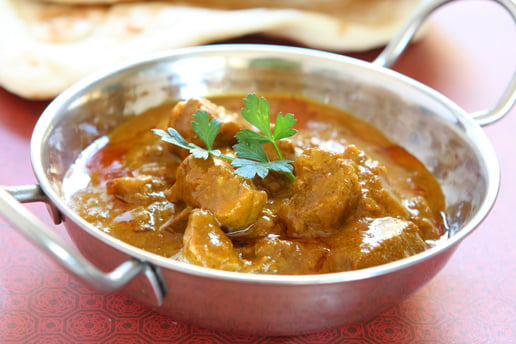
When it comes to New Year's resolutions, weight loss usually takes the cake as being the most popular area of change people wish to make in their lives. From diet fads and pills to intense workout regimens like Insanity and CrossFit, the various ways to lose weight seem endless. Some even take the Western medical route to "fix" their problem areas, opting for costly and risky surgeries or procedures like Botox or Liposuction. What the average American might not realize is that options in Traditional Chinese Medicine (TCM) and acupuncture are effective and much safer in comparison.
Measuring Obesity
When talking about weight loss, there are two indexes often used for measurement of weight issues:
1. Body Mass Index
In June 1997, the World Health Organization (WHO) Global Database on Body Mass Index (BMI) was developed as part of WHO's commitment to implementing the recommendations of the WHO Expert.
BMI = WEIGHT (kg) / HEIGHT (m) × HEIGHT (m)
BMI Categories:
Underweight = <18.5
Normal weight = 18.5–24.9
Overweight = 25–29.9
Obesity = BMI of 30 or greater
2. Waist Size
Waist size is the simplest and most common way to measure “abdominal obesity”—the extra fat found around the middle that is an important factor in health, even independent of BMI. It is the circumference of the abdomen, measured at the natural waist (in between the lowest rib and the top of the hip bone), the umbilicus (belly button), or at the narrowest point of the midsection.
Below are the abdominal obesity measurement guidelines for different ethnic groups according to the Harvard School of Public Health:
|
Country/Ethnic Group
|
Waist Circumference Cut Points
|
|
Europids*
In the USA, the ATP III values
(102 cm male; 88 cm female)
are likely to continue to be used for
clinical purposes
|
Male: ≥ 94 cm
|
|
Female: ≥ 80 cm
|
|
South Asians
Based on a Chinese, Malay,
and Asian-Indian population
|
Male: ≥ 90 cm
|
|
Female: ≥ 80 cm
|
|
Chinese
|
Male: ≥ 90 cm
|
|
Female: ≥ 80 cm
|
|
Japanese**
|
Male: ≥ 90 cm
|
|
Female: ≥ 80 cm
|
|
Ethnic South and
Central Americans
|
Use the South Asian recommendations
until more specific data are available
|
|
Sub-Saharan Africans
|
Use European data until
more specific data are available
|
|
Eastern Mediterranean
and Middle East (Arab) populations
|
Use European data until
more specific data are available
|
*In future epidemiological studies of populations of Europid origin, prevalence should be given using both European and North American cut points to allow better comparisons.
** Originally, different values were proposed for Japanese people but new data support the use of the values shown above.
How TCM and Acupuncture Can Help
According to China Knowledge Integrated (CNKI) database in China, there were 74 clinical research papers published between 1994 and 2002 on acupuncture application for weight loss. The effectiveness reached 85%-97%. The acupuncture is targeting both BMI and waist size.
Generally speaking, weight loss acupuncture is used to stimulate the acupoints and meridians. It can help by regulating the hypothalamic-pituitary– adrenal axis and the sympathetic-adrenal medulla systems. Therefore, it accelerates the basal metabolic rate and promotes fat metabolism. When calorie-burning increases, accumulated fat is consumed.
Using acupuncture to regulate and adjust, the human body self-balances. The approach is to stimulate the acupoints in order to strengthen the vital qi (the energetic substance). When the vital qi is strong, pathogenic factors cannot stay in the body. In other words, body fat no longer accumulates.
Benefits of Weight Loss Acupuncture
First, acupuncture can efficiently regulate lipid metabolism. Overweight patients usually have above normal lipid peroxidation. Acupuncture points are used to lower the lipid peroxidation level and accelerate lipid metabolism, thus achieving weight loss.
Second, acupuncture can help correct abnormal food cravings. Acupuncture regulates the nervous system in order to control the excessive gastric acid secretion. After acupuncture, the gastric emptying process slows and food cravings are reduced.
Third, acupuncture can effectively regulate endocrine disorders. Endocrine disorders are often accompanied by weight gain. The most typical endocrine overweight examples are postpartum and menopause related. There are two systems involved: the hypothalamic-pituitary–adrenal axis and the sympathetic-adrenal medulla. Disorders of these two systems are often found in overweight patients.
Besides acupuncture, herbal treatment, dietary regulations, meditation and, most importantly, exercise are all part of a weight loss treatment plan. There are many weight loss methods which we use during clinical practice at AOMA and which your acupuncturist can discuss with you. Acupuncture is a safe choice for weight loss without side effects. The acupuncture treatment regulates the body's internal functions and helps the body return to a normal rate of metabolism. It is not a temporary action, but one that produces long-term benefits.
Request an appointment at the AOMA clinics with Violet Song:

Download our introduction to Traditional Chinese Medicine Nutrition:







